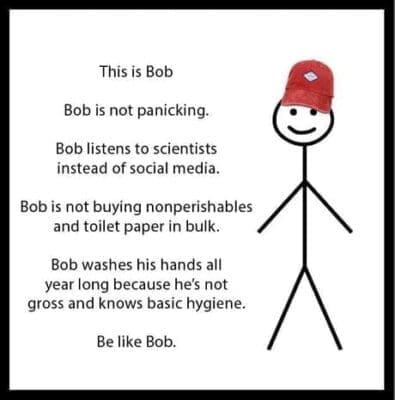Build Rapport as Soon as You Walk Through the Door…
A close friend of mine caught a nickname in class. ‘Kubrick’, my teacher called him. We were film students, me and Kubrick. So, the reference to the famous director himself felt like quite an honour, until he found out why…
As it turns out, Stanley Kubrick was known for abruptly harsh behaviour towards actors and crew. We watched some very old interviews with the director and I watched as my friend realised what had happened.
However, he wasn’t the type of person to let this bog him down, so he leaned into it… and created some great work too. ‘Kubrick’ stuck, but it only held true on set. In everyday life, Kris Hepner is a really friendly guy.
Kubrick’s Instant Rapport
We frequented a number of photography trips. Myself, Kubrick, and two of our friends piled onto a London-bound train early in the morning with more camera gear than collective knowledge of the underground… we made this work a number of times. On one trip, we were shooting a building outside Canary Wharf station. I turn to compare my shot with Kubrick and he’s gone. Of course. This happened a lot.
The three of us eventually find him at the tall glass doors of a posh hotel. He pointed through the glass and all four of us gawked at how swish the hotel lounge was. There was one collective thought among the group: ‘We have to shoot in there.’ After a little obligatory persuasion from the rest of us, telling Kubrick that there was no way they’d let us in, he waltzed through the door like he owned the joint.
Upon approaching the front desk, he built probably the fastest rapport with the receptionist I’ve ever seen someone build. Within a flat 3 minutes, Kubrick and Cody, the receptionist, knew all about each other. I watched as Kubrick strategically waited for the right time to approach the big question. “So Cody, do you reckon we could spend half an hour grabbing a few snaps of this lounge?” Cody agreed. We got the shot. Not just any shot. One particular photo happened to sell. It was Kubrick’s photo and for no small fee.

Why is Rapport Important?
Two-Way Trust
The special thing about having a rapport with someone is that it is a two-way street. We’ve all experienced the fake humility put forth by eager salesmen, it may make you trust them, but not consistently. A fantastic salesman will dream up a reason to trust them and let you believe it. Only until their needs are met, however. This is not rapport.
A good, solid rapport is built over a little more time. Do not be deterred, however, building a good rapport can be done in a single sitting.
The concept of two-way trust is the real bedrock of having good rapport. Providing not just reason, but the genuine motivation for someone to trust you as much as allowing yourself to trust them is what rapport is really all about. It’s more than possible to create a real, true ‘win-win’ situation out of a solid rapport. Yes, you could develop good persuasion techniques to sell what you want to sell and move on. In fact, you probably already have these techniques solidified. The real reason anyone wants to know how to build rapport, is repeated trust.
The difference between quick persuasion into a sale and well-developed rapport, is like the difference between sealing a leak in your house with duct tape and replacing the roof. You’ll always be better off in the long term with a new roof. That’s not to say duct tape doesn’t have its place, it absolutely does. There are certain situations, however, where developing a trust-based relationship with someone will serve you both much better long term.

Sticky Learning ® is 7 times more effective than 1-day training courses. Plus, you will get a Chain of Evidence proving your Return on Investment. Discover soft skills training that changes behaviours long term.

Rapport Means Relationship
It’s not as much of a learning curve or specifically skilled concept as one may believe. Rapport, on a basic level, means a good relationship. This is what you’re aiming for when developing a good rapport. Affinity, bond, and harmony are among the few synonyms of rapport that Google provides. This simply shows that it’s familiar things that contribute to rapport.
In a genuinely motivated friendship, each party is naturally inclined to lift one another higher. Once developed properly, the need for persuasion is shown the door. The more this friendship is cultivated, the quicker the desires of both parties will be met.
Now, I don’t know about you, but I’d much rather approach a deal with a client I’ve spent time developing good rapport with, than one I hardly know and must quickly persuade. This is true, I’m sure, for everyone. Unfortunately, good relationships and even friendships with clients take time to develop. What resource is more scarce than time? Well… I don’t think it’s necessary to write the answer to that.
As aforementioned, developing rapport quickly and even in a single sitting with someone is very possible. Of course, once established quickly, it’s always a good idea to continue developing and building on this relationship. It’ll help you in the future.
How Do I Build Good Rapport?
The ‘OHH’ concept
We now know what good rapport is, and why it’s beneficial to both client relationships and otherwise. The next step in fueling solid relationships is this; how do you actually do it?
There are three key differences between the ‘one-way trust’ and ‘two-way trust’ concept mentioned earlier: Openness, honesty, humility. These are all features of two-way trust that don’t exist in one-way trust. Furthermore, these are actual emotions and feelings experienced by both parties of a relationship with a good rapport, and not just temporarily felt by the customer when being sold to.
Further along in this article you’ll find 5 actionable tips that you can begin practicing in your relationships today, be it professional or otherwise. However, if nothing else, follow the ‘OHH’ concept. This can be used to analyse current relationships and build new, rapport-fueled ones too. Look at your supplier-client relationship and analyse whether openness, honesty, and humility are experienced by both parties.
If not, then good rapport can still develop and become beneficial. Introducing these three things in yourself when approaching this relationship, will urge the other person to do the same. More on this specific aspect later on.
There’s your good rapport, built in three easy steps.
Rapport Can Exist Everywhere

An example of a relationship with good rapport would be my relationship with a teacher in school. Mrs. Clarke was my English teacher. She was fantastic. In school, I was what seemed to be referred to as a ‘spirited’ student. I wasn’t badly behaved, but I was far from a teacher’s pet. Most teachers to a disliking to this. Not Mrs. Clarke, though. She ran with it.
The rapport we built with each other was one of acceptance. I was there to do my job, she was there to do hers and neither of us really had a choice. So, we made it as easy for each other as we could. She didn’t nag me for listening to music in class, and I didn’t talk back at her… well, because she didn’t nag me.
Due to this, my work was always complete. A win-win situation. This mutual understanding benefited both of us, both long and short term. In the short term, I looked forward to her classes and she didn’t dread mine. In the long term, I did very well in her class.
The point of this example is to provide an idea of what rapport can look like. It does not need to be trained or forced, it can be learned and naturally implemented. Rapport is the desire from both parties to benefit each other. That’s the simplest way to define it, and my time with Mrs. Clarke was exactly that.
5 Actionable Tips for Building Rapport
1. Conversation Balancing
A balanced conversation simply means that both parties are equally expressive and receptive throughout. We all know someone who would keep talking about themselves even if you slowly walked away and replaced yourself with a large brick wall. Yes, I know. I’m thinking about the last painful conversation with that person too. Let’s move on.
We all also know someone who would listen to what you have to say whether you’re talking about a fun camping weekend, or the political standpoint of West-Egypt since last Tuesday’s underground newscast…
The idea of conversation balancing is to land somewhere in between these two people. Be an active listener and an interesting speaker. This will help develop rapport in a big way.
2. Small Talk – Use it, Then Ditch it
The concept of small talk is an odd one, to begin with. If used well, however, small talk can be a beneficial tool in breaking the ice and beginning to build rapport. When most people think of small talk, they think of the hairdresser, or the taxi driver, or the receptionist. These are examples of relationships that survive on small talk alone. This means that, when the small talk runs out, the relationship is done. This is fine in these types of situations, but not when there’s clearly room for ‘big talk’.
When approaching someone new, a new client, customer, anyone – use the small talk, but use it quickly. Small talk is where you make your first impression and we all know first impressions aren’t supposed to last very long. Use small talk to develop a balanced conversation, and when the opportunity for ‘big talk’ arises, take it. Move the conversation on and start building a relationship.
3. Remember the Basics
Utilising the above tips won’t mean much without a decent foundation to put them on. Your foundation in conversation is simply good communication.
Smile, relax, make the effort to remember names, talk appropriately. These are all things that naturally happen during a good conversation. When looking to build rapport, these things are your key to the door. Open the door with good, solid communication skills and only then begin to venture through the house.
4. Cats and Laptops
An odd title agreed. However, if you own a cat, I can guarantee they’ve gotten in the way of your work by sitting atop your keyboard causing a nuisance. If you don’t own a cat, chances are pretty high that you’ve seen a picture like the one below floating around social media.

The real reason cats do this is simply because they’re trying to be like you. A quick tip: get your cat their own little laptop and watch them work alongside you. Mr. Snuggles will never bother you again.
The point of cats and laptops is that it can be implemented in human interactions. Psychology says that we like people that are like us. So making a little effort to mimic the other person will subconsciously drive a positive response. This is a fine art, however.
Too much will feel off and a little weird. Not enough and they won’t subconsciously pick it up. The balance, the in between is what you’re looking for here. If they use a certain word often, use it too. If they hold their cup in a specific way, pick your moments and do it too. This will drive the relationship forward in a positive way.
5. Compassion
Compassion is always important in a relationship of any kind. Utilising this emotion, however, can be a fantastic tool in bonding a relationship and building good rapport. Limiting your defensiveness is useful here. People will be automatically repelled by someone who is overly defensive. When talking to someone like this, it’s subconsciously felt that you must tread carefully and watch what you say.
Feeling relaxed with someone is key to solid rapport. If they feel you’re defensive, they will become instantly less relaxed.
Another good tip here is something a wise man once said. Or rather, a wise character. Ted Lasso is a brilliant TV show led by Ted himself. Ted’s outlook on life is incredibly positive. One of his catchphrases is; ‘Be curious, not judgemental.’ Implementing this into relationships can really boost relaxation felt by both parties. Making an effort to understand, rather than judge will make someone feel much more at ease in your company.
Be like Bob
‘Be like Bob’ is an internet phenomenon that’s been around for a while.

Whilst the cartoon isn’t mean to imply this, the title ties in well with the concept of Neuro-Linguistic Programming (NLP).
As I began with one, I shall finish with a story too. During my college course, we were asked to pitch our project ideas to the class, our teacher, and a rolling camera. This was daunting. I’d never explicitly laid out my ideas with complete vulnerability before. The fear that it wasn’t as good of an idea as I’d thought was hanging over me in the run-up to my pitch. I walked into the room empty-handed as we had been asked and in the few brief moments before I began, I thought; ‘who do I know that would come up here and nail a great pitch?’. I held this person in my head, we’ll call him Bob.
‘Ready?’
‘I think so’…
‘Okay, off you go.’
I thought to myself: Be like Bob.
I pitched the idea exactly how Bob would have. My idea was approved and became some of the best work I’d done during the course.
So, I urge you to utilise those five tips. And, to make things easier, find your Bob and be like them.




